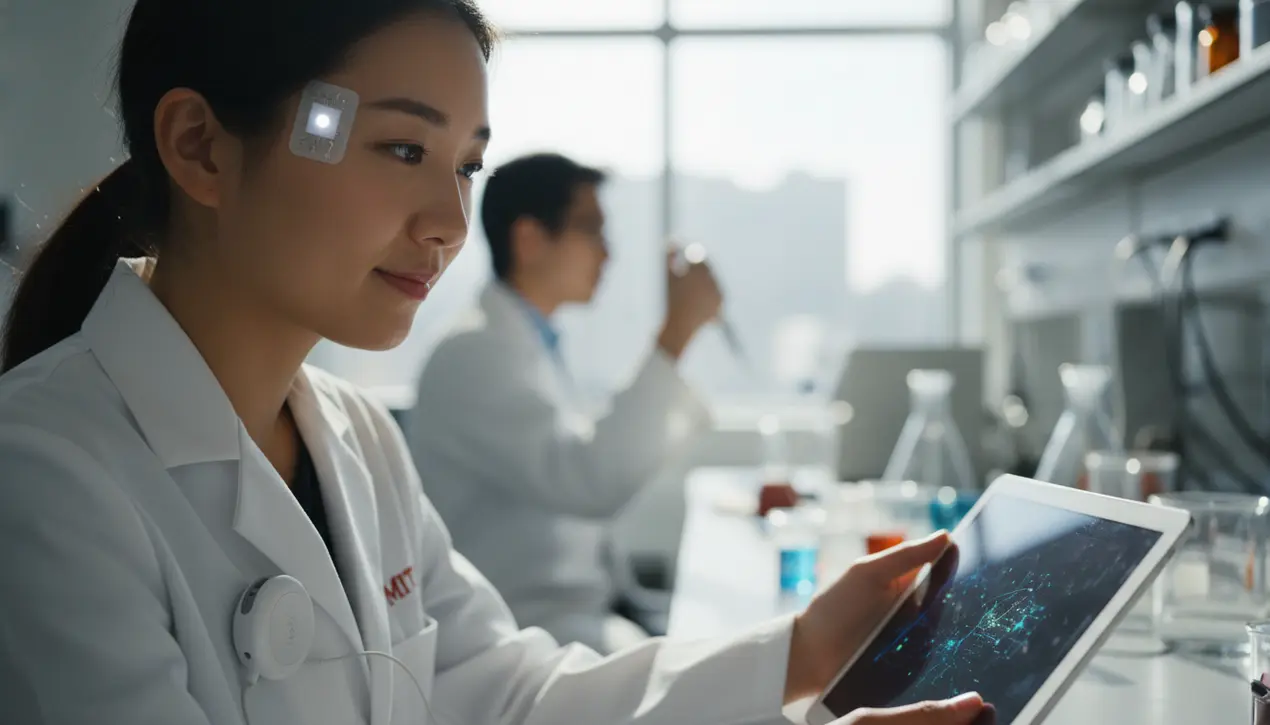
SciencemedicineMedical Technology
MIT and Amorepacific develop wearable skin aging analysis patch.
KE
Kevin White
5 hours ago7 min read4 comments
The convergence of artificial intelligence and biotechnology is accelerating at a breathtaking pace, and a new development from MIT and South Korean beauty giant Amorepacific exemplifies this fusion with a product that feels ripped from science fiction. Dubbed 'Skinsight,' this wearable 'electronic skin' platform, slated for a CES 2026 debut, represents a significant leap from reactive skincare to a predictive, data-driven paradigm.Imagine a discreet, Bluetooth-equipped sensor patch, breathable and sweat-resistant enough for long-term wear, that adheres to your skin like a second layer. This isn't a simple fitness tracker for your wrist; it's a sophisticated bio-monitor that continuously tracks a suite of critical dermal metrics: skin tightness as a proxy for collagen integrity, UV exposure as the primary driver of photoaging, and the delicate balance of temperature and moisture that defines a healthy skin barrier.The raw data from these sensors is merely the beginning. The true innovation lies in the AI-powered analytical engine within the companion mobile app.This system doesn't just report numbers; it interprets them through complex models of skin biology, approximating how these fluctuating factors—a sudden spike in UV intensity during a lunchtime walk, a drop in hydration after a long flight—cumulatively contribute to and accelerate the aging process. It then cross-references this personalized, real-time aging forecast with a database of skincare formulations to suggest the most efficacious products, effectively creating a dynamic, bespoke skincare regimen that evolves with your skin's daily needs and environmental challenges.This project sits at the intersection of several booming technological trends: the miniaturization of flexible electronics, the rise of advanced biocompatible materials that can interface comfortably with human tissue, and the application of machine learning to vast, personalized biological datasets. The implications extend far beyond the consumer beauty aisle.The underlying technology platform could be adapted for medical diagnostics, such as monitoring for early signs of eczema flare-ups, tracking wound healing in post-operative patients, or delivering targeted drug release based on sensed biomarkers. The collaboration itself is noteworthy—a world-leading academic institution in engineering and computer science partnering with a global cosmetics corporation signals a fundamental shift in how beauty and wellness products will be developed and validated, moving from lab-based chemical formulations to integrated hardware-software systems.Of course, such a deeply personal data collection device raises immediate questions about privacy and data sovereignty. The intimate profile Skinsight builds—your daily routines, your environmental exposures, the very rate at which your body ages—constitutes a highly sensitive biometric dataset.How Amorepacific and MIT navigate the security, ownership, and potential commercialization of this data will be as critical to its success as the technology's performance. Furthermore, the cost and accessibility of such a sophisticated device remain unannounced, posing questions about whether this will remain a luxury gadget or become a mainstream health tool. As we look toward its CES unveiling, Skinsight is more than a new product; it is a harbinger of a future where our technology doesn't just sit in our pockets but integrates with our biology, offering a continuous feedback loop between our bodies and the digital world, all in the pursuit of not just looking better, but understanding ourselves on a cellular level.
#wearable sensor
#skin aging
#real-time analysis
#skincare
#AI recommendations
#CES 2026
#Amorepacific
#MIT research
#featured
Stay Informed. Act Smarter.
Get weekly highlights, major headlines, and expert insights — then put your knowledge to work in our live prediction markets.
Related News
Comments
Loading comments...
© 2025 Outpoll Service LTD. All rights reserved.